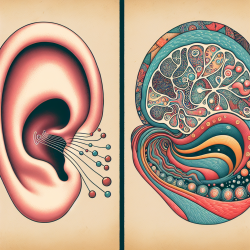Understanding Trauma Narratives in Therapy
Trauma narratives (TNs) are a vital component of trauma-focused cognitive behavioral therapy (TF-CBT), yet they are underutilized by therapists. Recent research published in Implementation Science Communications sheds light on the factors influencing therapists' use of TNs and offers insights into improving implementation in clinical practice.
Research Insights: Why Are Trauma Narratives Underused?
The study, "Understanding therapists’ perceived determinants of trauma narrative use," utilized the Theory of Planned Behavior (TPB) and the Consolidated Framework for Implementation Research (CFIR) to explore therapists' intentions and actual use of TNs. While many therapists express strong intentions to use TNs, a significant gap exists between intention and practice. Nearly half of the therapists surveyed had not used TNs in the past six months, despite acknowledging their importance.
Key Determinants of Trauma Narrative Use
Several factors influence the use of TNs, including:
- Attitudes: Therapists recognize the benefits of TNs, such as helping children process trauma and reduce symptoms. However, concerns about worsening symptoms and caregiver reactions can deter use.
- Normative Beliefs: Support from supervisors and caregivers is crucial. Therapists feel encouraged when they perceive approval from these groups.
- Self-Efficacy: Confidence in using TNs is bolstered by caregiver support and consistent client attendance, while lack of support and client readiness pose challenges.
Integrating Theory and Practice
The integration of TPB and CFIR offers a comprehensive understanding of the barriers and facilitators to TN use. By addressing these determinants, therapists can improve their practice and outcomes for children.
Practical Steps for Therapists
To enhance the use of TNs in therapy, consider the following strategies:
- Enhance Training: Ongoing training and booster sessions can reinforce skills and build confidence in using TNs.
- Leverage Support Systems: Engage supervisors and peers to create a supportive environment that encourages TN use.
- Adapt to Client Needs: Tailor TNs to the individual needs of clients, using creative approaches like art or music to make narratives more accessible.
- Address Barriers: Work with caregivers to ensure their support and address any concerns they may have about the process.
Encouraging Further Research
While this study provides valuable insights, further research is needed to explore the causal pathways between intentions and behavior in TN use. Understanding these dynamics can help develop targeted interventions to improve implementation.
For a deeper dive into the research, you can read the original paper Understanding therapists’ perceived determinants of trauma narrative use.










